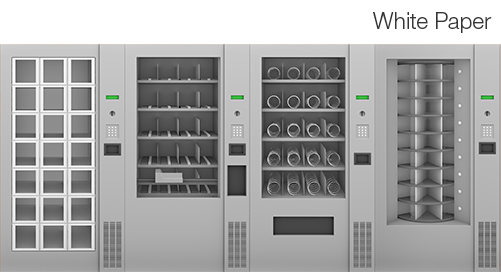Automated farming at Superwurm
How one family business is using igus® components to fuel growth
A specialized business is using igus® components, almost exclusively, to automate labor-intensive processes. “Specialized” is the operative word here; the company is a fully-dedicated breeder of giant red worms.
Superwurm is a small, German-based business that produces red worms, scientifically known as dendrobena, which are often purchased for fishing or as a natural fertilizer for gardens. Martin Langhoff is the owner of the unique family-run operation, who came across igus® products when building his first self-made machine.
Langhoff’s robots and automated guided vehicles (AGVs) relieve his family of strenuous tasks. They are built with igus® bearings, energy chains, linear guides and stepper motors. The wear-resistant and maintenance-free features of the igus® components have been critical for Langhoff in the development of his business. The success of his technology has been so effective that he even started marketing his products, under the name RobCoTec.
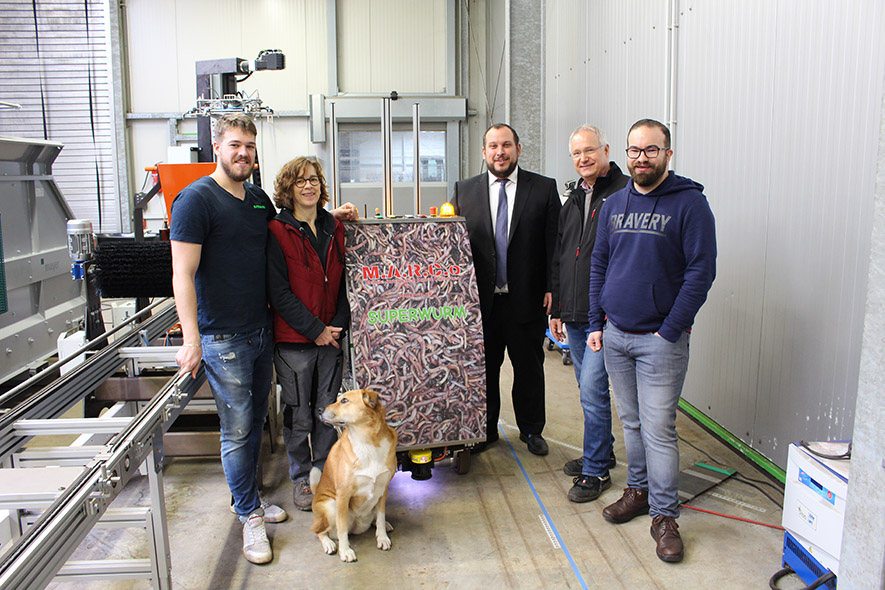
“Small businesses need to use affordable and easy automation solutions for production and warehousing to keep up with the big ones,” he said.
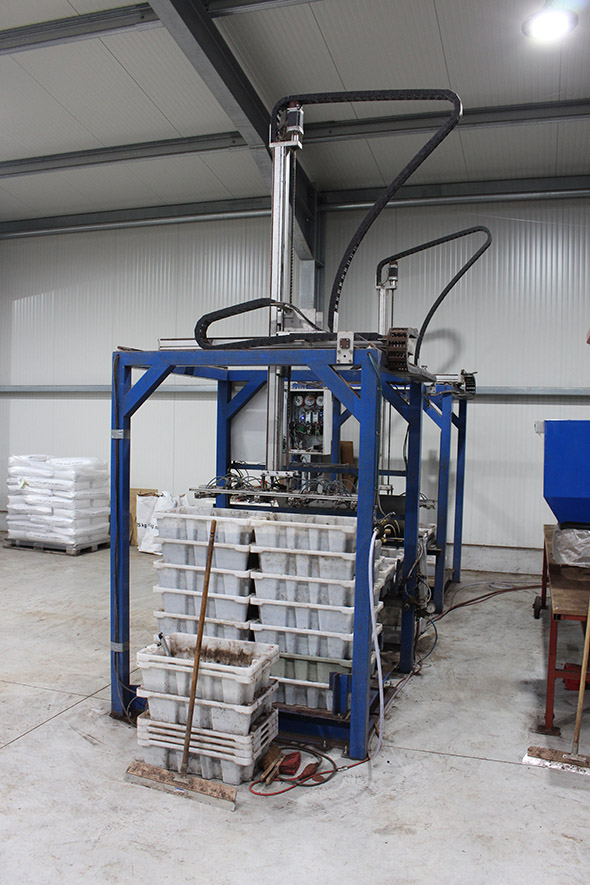
The first machine that Langhoff engineered was for feeding the worms and watering the soil. The unit needed to work around the clock and function reliably while exposed to moisture and debris. No external lubrication could be present so that the worms and soil remain uncontaminated.
Keeping these requirements in mind, Langhoff built the machine with drylin® quad block carriages, which have solid plastic bearings and slide along two parallel shafts. He also used the igus® E4 e-chains® for energy supply. Both product lines have been used at Superwurm for a decade, without maintenance or repairs. The machine picks up the containers with a compressed air gripper, where the drylin® carriages serve as bearing points for the movable elements.
Since soil and moisture are exposed to the bearing points of the machine, the self-lubricating igus® bearing material is key. The material is embedded with solid lubricants, and thus requires no additional external lubrication, eliminating the possibility of contamination. This also means that dirt cannot adhere to the system, as foreign bodies cannot stick and are conveyed out of the raceway by the contact surface between the plastic sliding element and the guide.
Complete automation with AGVs
Looking to enhance his technology even further, Langhoff developed machines to fully automate the feeding and watering process. Two robots, a conveyor belt and an AGV now take care of monotonous feeding and watering steps that previously had to be done by personnel.
“With the new plant, feeding and watering can be carried out around the clock, even when there is a shortage of staff,” he said. “Errors are reduced to an absolute minimum.”
In the AGV, two parallel drylin® ZLW toothed belt axes (size 1040) are installed, which pull the worm containers into the vehicle on a trolley. For full optimization, belt axes with stepper motors (NEMA23) are used, allowing containers as heavy as 265 pounds to be pulled. Despite their extreme durability, the igus® solutions are lightweight and require low power for operation. They are also shock and dirt-resistant, ideal for use in an AGV.
The toothed belt axes are moved via cables, which are guided with an E6 e-chain®. This cable carrier system protects the cables from external influences, which significantly increases service life. When the containers are completely retracted into the AGV, a barrier closes via an igus® stepper motor to provide additional safety during transport.
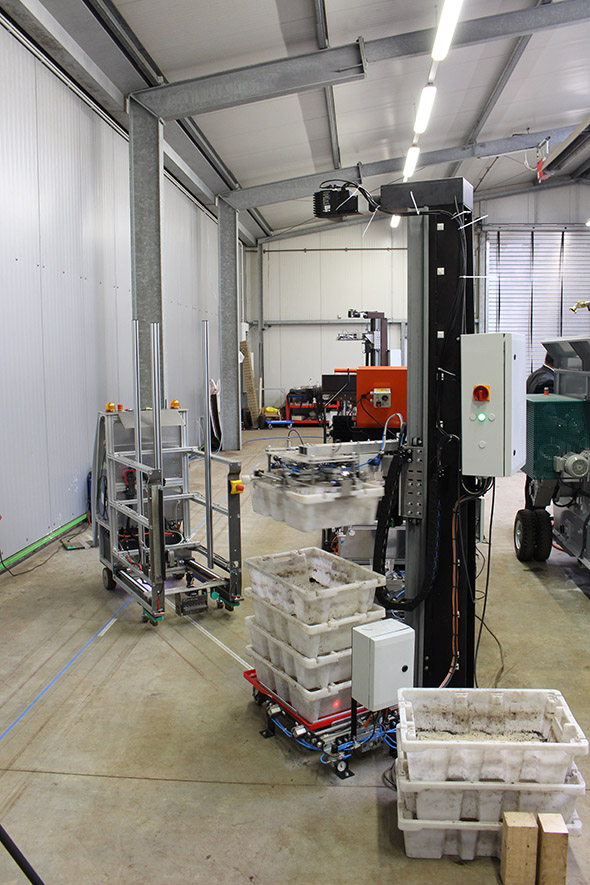
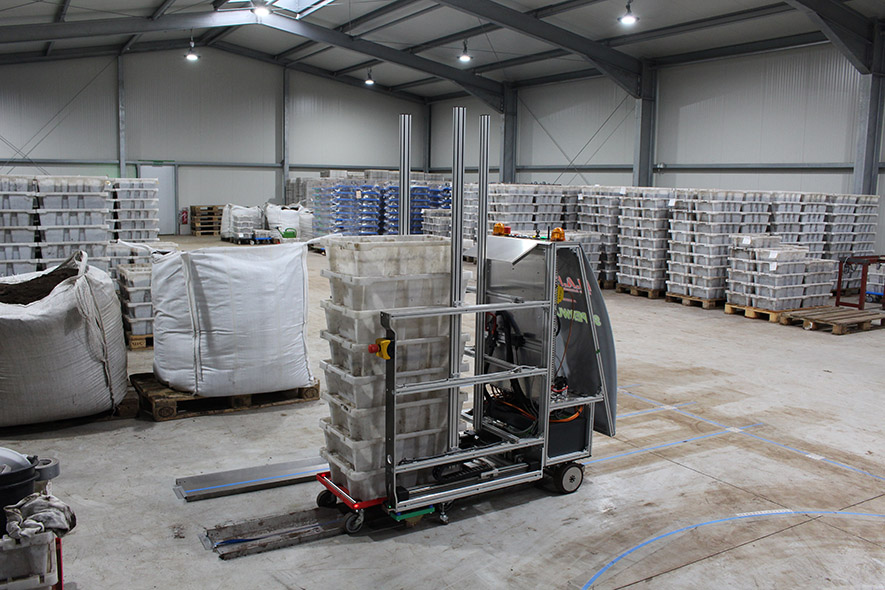 When the AGV drives the stack of containers to the feeding and irrigation system, it places them one by one on an assembly line. This task requires a gripper to detect the position of the container and raises them only when a secure grip is achieved.
When the AGV drives the stack of containers to the feeding and irrigation system, it places them one by one on an assembly line. This task requires a gripper to detect the position of the container and raises them only when a secure grip is achieved.
Looking for a material to house the shafts that is self-lubricating, lightweight and capable of withstanding high radial loads, Langhoff used igubal® ESTM pillow block bearings made of tribologically-optimized plastics. The igubal® material is also beneficial for movement, as it is very vibration-dampening and light. The gripper’s cables are equipped with an E4 series e-chain®, as well as stepper motors with a gearbox so that the gripper can successfully move the containers onto the assembly line.
Once the containers are on the assembly line, a second robot lifts the containers from the line to the trolley. The AGV then transports them back to the warehouse. If the AGV battery is empty, it is programmed to drive to the charging station and is ready for use again after 30 minutes.
Quick set-up for worm containers
The Superwurm containers themselves even require automation for maintenance. They must be drilled with holes for oxygen to pass through and glued with plastics sieves, which requires ample downtime and high costs. The self-adhesive sieves alone cost about $2,800 a year.
“Drilling the buckets and gluing the sieves were always a very annoying job for us,” Langhoff said. “Nobody would like it.”
Devising a way to eliminate these tasks, Langhoff engineered a frame where 40 buckets are clamped simultaneously. Then, with a drylin® gantry, a power tool is moved to the buckets and automatically drills the ventilation holes. The shafts of the portal are supported and synchronized with igubal® KSTM pillow block bearings.
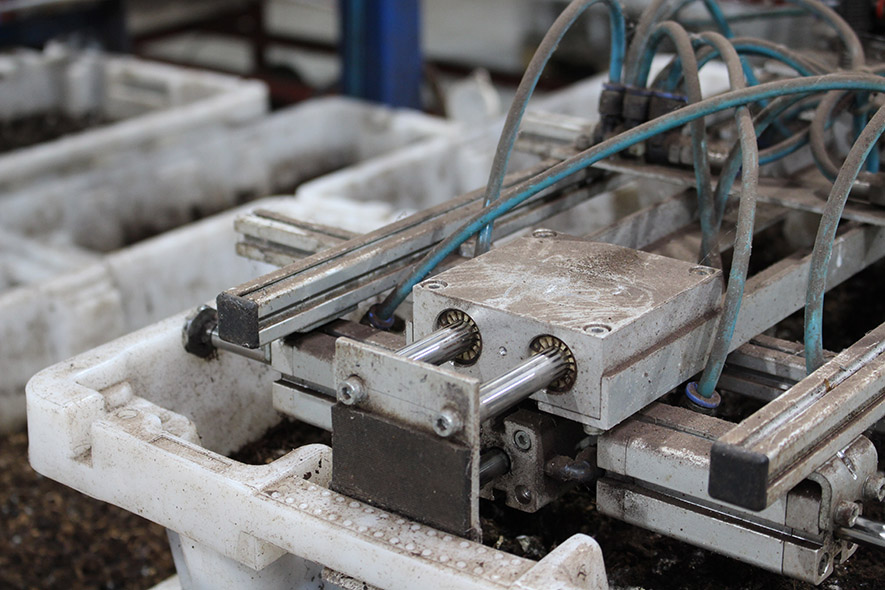
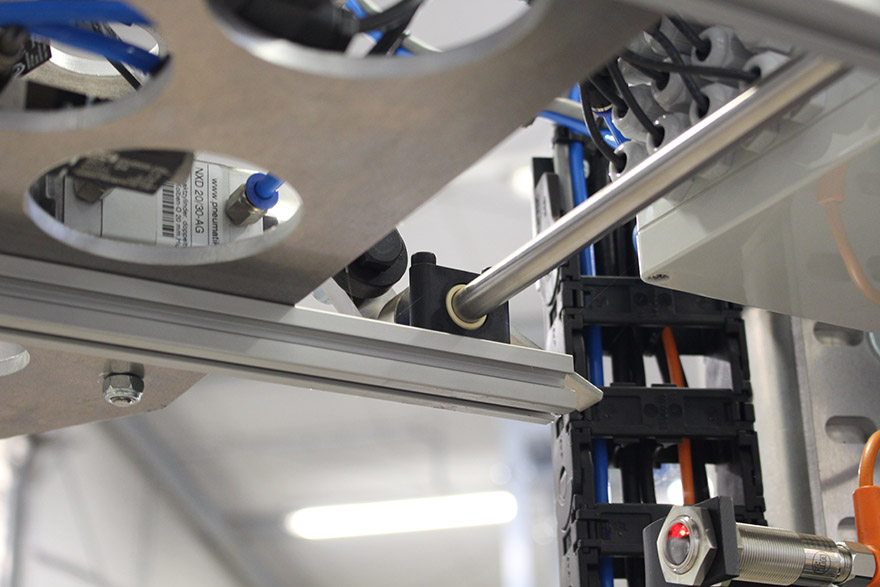
“Now it only takes 10 minutes to set up the buckets in the machine,” Langhoff said.
The need for sieves has also been eliminated since the company logo is drilled into the bucket with tiny holes. The holes are small enough where oxygen can get through yet no soil is lost. Not to mention, a unique branding emerged.
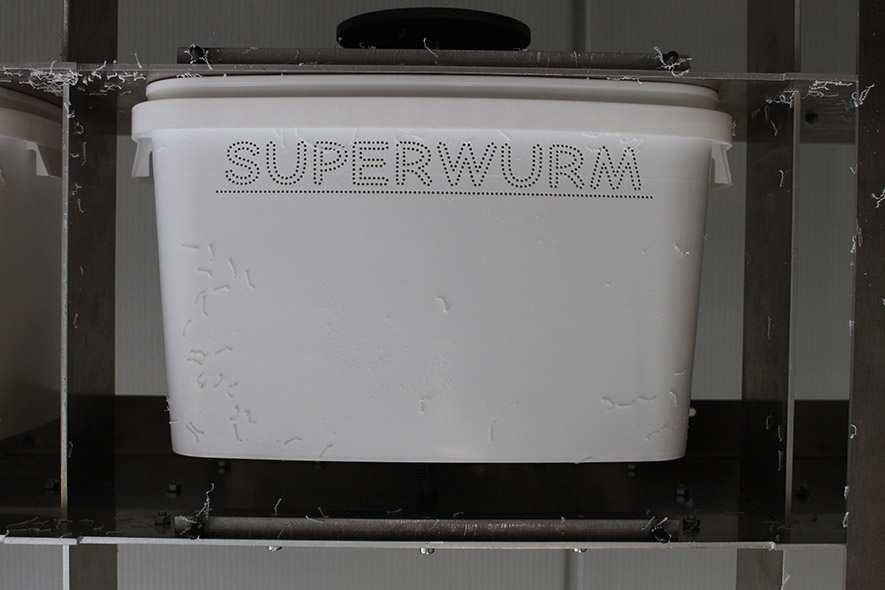
Langhoff encountered some difficulties when building the drill. For the gantry, he used drylin® toothed belt axes with stepper motors. Initiators and axes holders were selected for the application to match the structural profiles. The stepper motor for the vertical axis was found to be too weak to move the power tool as desired.
The problem was resolved with the installation of a larger motor. E4 e-chains® were also implemented to enable long, functional strokes. When the ventilation holes are drilled, very fine plastic chips are produced. The e-chains, as well as the drylin® slides, are dirt-resistant, so they are ideally suited for chip exposure. The self-lubricating igus® plastic makes the components easy to clean, as chips cannot adhere.
For future automated units, Langhoff plans to continue using the wear-resistant and maintenance-free igus® components. He said he knows, with igus®, the systems will operate reliably for a number of years. Prospective automated designs are being conceptualized.
“I already have the initial ideas in my head,” he said.
Visit igus.com for more information, or see more application stories here.


